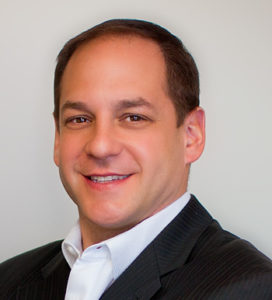By Laura Thill
Hygienists today must provide exceptional clinical care – and great customer service.

Dental patients today expect excellent – and efficient – service. If they don’t find it at one practice, there’s nothing to stop them from looking elsewhere, according to Alan J. Acierno, DDS, CEO of DecisionOne Dental Partners. At the same time, patients spend “the majority of their time with the hygienist, developing a relationship,” he points out. “This relationship is vitally important to the success of the practice. So, in addition to providing excellent clinical care, hygienists are now expected to provide a high level of customer service.”
The question is, how can hygienists, who are clinically trained, also provide excellent customer service and ensure patients spend as little time as possible in the chair, he continues. “Our patients lead busy lives and don’t want to spend all day at the dental office,” he says. “Finding that balance is extremely difficult and can only happen if the office works as a team to ensure it does.”
Dentists – as well as the entire dental team – must keep in mind that “the majority of a patient’s dental experience takes place in the hygiene chair,” Acierno continues. “Patients place much of their loyalty and trust in their hygienist. Everyone in the office must take responsibility to make sure the hygienists are able to provide an excellent experience for their patients and ensure this loyalty and trust is established.” That said, hygienists should be trained to take photos, identify key symptoms and signs, and have a sense of how the dentist typically treats each case, he explains. Additionally, they should take time to educate their patients. “When it is time for the doctor exam, a system should be in place to ensure all of this information is delivered in an organized way.” So often when the dentist steps away from the operatory, the patient turns to the hygienist to confirm that the recommended treatment is truly necessary, he adds.
 Acierno is confident that dental professionals working in large group settings and DSOs have an advantage. “The best part about being a large group practice is that we can learn from one another by looking at best practices taking place at other offices within the group,” he explains. “This is why training and mentorship are so important. In my group, we have CE events specifically geared to our hygienists. This CE isn’t merely clinically focused. We also educate around such concepts as communication, relationship-building and leadership. We have identified our star hygienists and utilize them as mentors for our newer hygienists, as well as for those who require additional help.”
Acierno is confident that dental professionals working in large group settings and DSOs have an advantage. “The best part about being a large group practice is that we can learn from one another by looking at best practices taking place at other offices within the group,” he explains. “This is why training and mentorship are so important. In my group, we have CE events specifically geared to our hygienists. This CE isn’t merely clinically focused. We also educate around such concepts as communication, relationship-building and leadership. We have identified our star hygienists and utilize them as mentors for our newer hygienists, as well as for those who require additional help.”
Patient perception
The hygienist-patient relationship definitely influences a patient’s decision to return to a dental practice, notes Acierno. But, “if an organization does not provide an environment where everyone feels safe and comfortable, patients won’t return and staff will leave,” he points out. And, a thorough infection prevention program is key, he adds. “I think this topic is often overlooked,” he says. “It’s not fun to talk about it, and it requires additional work and time to be done properly. However, the risks are just too great for infection prevention to be overlooked.
Staff education is central to developing an infection prevention program, according to Acierno. The entire dental team must understand why protocols and decisions are made, and be on board with these decisions, he explains. “The dental team must understand that everything is done for their benefit and protection. Once they understand this and realize the organization is coming from a point of caring for their well-being, I think compliance will be much higher.
“We have seen stories in the news of dental offices in which the staff is not following proper infection prevention methods,” he continues. “This type of publicity can be catastrophic to an office or dental group.” Particularly in today’s social media savvy culture, a negative review can draw a lot of attention. “In addition to the bad publicity, it will likely cause state and local regulatory boards to take note,” he says. “When this happens, audits and fines are likely to follow.”

